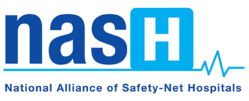The National Alliance of Safety-Net Hospitals has submitted extensive comments to the Centers for Medicare & Medicaid Services about its proposed changes in the Medicare outpatient prospective payment system for 2020.
 In its letter to CMS, NASH focused on four issues:
In its letter to CMS, NASH focused on four issues:
- CMS’s price transparency proposal
- Reimbursement for 340B-covered prescription drugs
- Medicare site-neutral payment policy
- Proposed updates of the inpatient-only list of medical procedures
Today this blog features NASH’s comments about proposed updates of Medicare’s list of medical procedures that can only be performed on an inpatient basis but that Medicare now proposes can be performed for outpatients as well. Last Wednesday we presented NASH’s views on CNN’s price transparency proposal and last Thursday we presented NASH’s views on reimbursement for 340B-covered prescription drugs. Last Friday we presented proposed changes in Medicare’s site-neutral payment policies for outpatient care.
See the complete NASH letter to CMS here.
Updates of the Inpatient-Only List
In the proposed rule, CMS proposes removing arthroplasty – acetabular and proximal femoral prosthetic replacement total hip arthroplasty with or without autograft or allograft – from the list of procedures and services that will be paid only under Medicare’s inpatient prospective payment system. NASH objects to this change as it has been proposed. While we acknowledge that it may be possible to perform hip replacement on an outpatient basis on some patients under some circumstances, hip replacement is medically complex and invasive surgery – far more so than knee replacement, which has already been removed from the inpatient-only list. Complications can arise even in the most otherwise healthy of patients. Often, in fact, hip replacement is performed on an emergency basis, which can complicate both the procedure and recovery from it. The opportunity for full and safe convalescence is important: patients who have hip replacement on an outpatient basis and who end up needing post-acute care because of complications would not even, under this proposed rule, be eligible for Medicare-covered skilled nursing care because they spent less than 24 hours in a hospital. This could jeopardize their complete recovery from serious surgery. In this respect, this proposed change is not in the best interests of the Medicare population. NASH suggests that before implementing this proposal, CMS address this problem through additional rule-making.
 NASH also is concerned about how making hip replacement available on an outpatient basis could affect private safety-net hospitals that participate in the Comprehensive Care for Joint Replacement (CJR) and Bundled Payments for Care Improvement (BPCI) Advanced programs. These programs face the prospect of decreases in inpatient volume and the effect of such decreases on provider target prices, yet the regulation does not address how this would be addressed in the context of those programs. This, too, would benefit from additional rule-making before hip replacement is removed from the inpatient-only list.
NASH also is concerned about how making hip replacement available on an outpatient basis could affect private safety-net hospitals that participate in the Comprehensive Care for Joint Replacement (CJR) and Bundled Payments for Care Improvement (BPCI) Advanced programs. These programs face the prospect of decreases in inpatient volume and the effect of such decreases on provider target prices, yet the regulation does not address how this would be addressed in the context of those programs. This, too, would benefit from additional rule-making before hip replacement is removed from the inpatient-only list.
NASH supports CMS’s proposal to establish a one-year exemption from medical review activities for procedures removed from the inpatient-only list beginning with 2020. While a step in the right direction, more can and should be done to allow time both for provider education and to ensure that CMS and its quality review contractors are aligned on medical review guidance for providers.
In addition, NASH supports CMS’s proposal to continue quality reviews of short-stay inpatient claims for procedures that have been removed from the inpatient-only list within the first year. Such claims will not be counted against a provider in the context of the two-midnight rule. We do not believe medical review guidance questions have been fully addressed and think additional time is needed for processing claims and for contractors to gain experience in medical review in this area before putting hospitals at risk for recovery audit contractor (RAC) referrals.
We appreciate that these procedures would not be eligible for referral to RACs for non-compliance with the two-midnight rule and RAC patient status review during their first calendar year of removal from the list but believe one year is not enough time. NASH urges CMS to consider the challenges that occurred when procedures were removed from the inpatient-only list in the past and give itself and contractors additional time to develop guidance that can be shared for stakeholder input prior to implementation.
See the complete NASH letter to CMS here.

